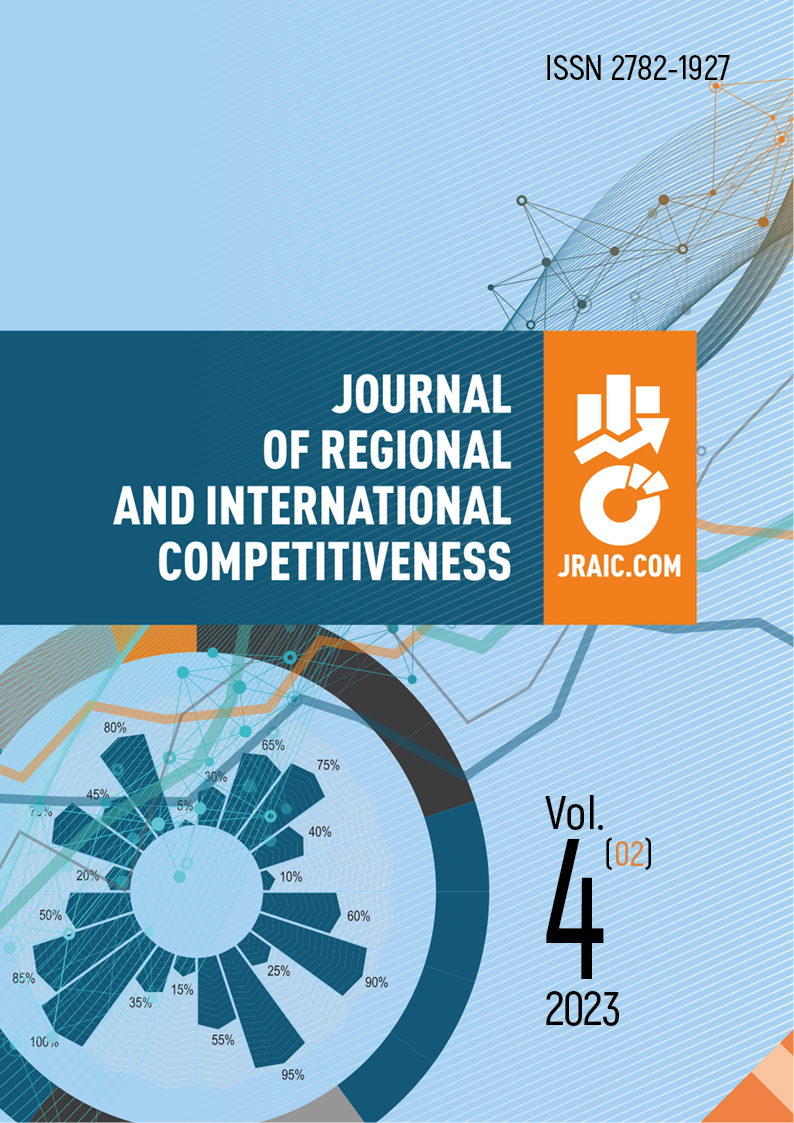Financial University under the Government of the Russian Federation
Moscow, Russian Federation
Moscow, Moscow, Russian Federation
The active introduction of 5G technologies in the countries of North-East Asian countries, Europe and the United States is due to the expected direct and indirect effects on the economy and social sphere. Nowadays, they implemented in agriculture, healthcare, industrial production, media, and financial services. The deployment of 5G networks has its own specifics, requires a certain infrastructure and administrative support. The article assesses the problems these countries often face when implementing 5G technology, and determines the prospects for their development in terms of the modern economy. The leading countries in technological development in the European Union - Germany and the Netherlands - have been identified as the object of the study. The article uses a mixed approach to research: SWOT analysis, assessment of the multiplier effect on economic development (GDP growth) and the labor market (creation of new jobs) when implementing 5G technologies. To understand the current state of 5G implementation in Germany and the Netherlands, strengths were identified, such as general economic dynamics, tax support, and growing demand. Among the problem areas, an imbalance of the labor market was revealed - unemployment in Germany, a shortage of labor resources in the Netherlands, dependence on the common policy of the European Union, rising inflation, interest rates, and others. The determination of the direct effect showed that the multiplier value is much higher in small countries, that is, they will receive the maximum effects from investments in 5G technologies. Whereby, the large countries achieve a high absolute increase in GDP and employment.
5G TECHNOLOGIES, MOBILE OPERATORS, THE IMPACT OF 5G ON THE ECONOMY, SWOT ANALYSIS, MULTIPLIER EFFECT THE IMPACT OF 5G TECHNOLOGIES ON ECONOMIC DEVELOPMENT, GERMANY, THE NETHERLANDS
1. Allam, Z. (2019). Cities and the digital revolution: Aligning technology and humanity.
2. Allam, Z., & Jones, D. S. (2021). Future (post-COVID) digital, smart and sustainable cities in the wake of 6G: Digital twins, immersive realities and new urban economies. Land use policy, 101, 105201.
3. Attaran, M. (2023). The impact of 5G on the evolution of intelligent automation and industry digitization. Journal of ambient intelligence and humanized computing, 14(5), 5977-5993.
4. BMDV (2021). 5G Strategy for Germany. Retrieved from: https://bmdv.bund.de/SharedDocs/EN/ publications/5g-strategy-for-germany.pdf?__blob=publicationFile (accessed 13.03.2023).
5. China Mobile (2021). 5G+Smart Agriculture. Retrieved from: https://www.chinamobileltd.com/en/ esg/sd/2021/07.pdf (accessed 13.03.2023).
6. Christ, C. F. (1955). A review of input-output analysis. Input-output analysis: An appraisal.
7. Di Giulio, R. et al. (2021). ICTs for accessing, understanding and safeguarding cultural heritage: the experience of INCEPTION and ROCK H2020 projects. International Journal of Architectural Heritage, 15(6), 825-843.
8. Dutta, S., et al. (2021). Global innovation index 2021: tracking innovation through the covid-19 crisis. WIPO.
9. Dutta, S., et al. (2022). Global Innovation Index 2022: What is the Future of Innovation-driven Growth? (Vol. 2000). WIPO.
10. Elder, J. (2019). How Kevin Ashton named the internet of things. Retrieved from: https://blog.avast. com/kevin-ashton-named-the-internet-of-things (accessed 13.03.2023).
11. Ericsson (2017). The 5G business potential. Second Edition. October. Retrieved from: https://www. economiadehoy.es/adjuntos/19430/Ericsson-5G-business-potential-report.pdf (accessed 13.03.2023).
12. European Commision (2016). Identification and quantification of key socio-economic data to support strategic planning for the introduction of 5G in Europe. – Tech. Rep. 30-CE-0683419/00-456. Retrieved from: https://connectcentre.ie/wp content/uploads/2016/10/EC-Study_5G-in-Europe.pdf (accessed 13.03.2023).
13. European Commission. Identification and quantification of key socio-economic data to support strategic planning for the introduction of 5G in Europe. – Tech. Rep. 30-CE-0683419/00-45, 2016. Retrieved from: https://connectcentre.ie/wp content/uploads/2016/10/EC-Study_5G-in-Europe.pdf (accessed 13.03.2023).
14. Eurostat (2021). Increase in high-speed internet coverage in 2021. Retrieved from: https://ec.europa. eu/eurostat/web/products-eurostat-news/-/ddn-20220822-1 (accessed 13.03.2023).
15. GSMA (2017). The5G era: age of boundless connectivity and intelligent automation. GSM Association. Retrieved from: https://www.gsmaintelligence.com/research/?file=0efdd9e7b6eb1c4ad9aa5d4c-0c971e62&download (accessed 13.03.2023).
16. GSMA Association (2021). The Mobile Economy Europe 2022. Retrieved from: https://www.gsma.com/mobileeconomy/wp-content/uploads/2022/10/051022-Mobile-Economy-Europe-2022.pdf (accessed 13.03.2023).
17. Kostoff, R. N., et al. (2020). Adverse health effects of 5G mobile networking technology under real-life conditions. Toxicology Letters, 323, 35-40.
18. PWC (2021). The global economic impact of 5G: powering your tomorrow. Retrieved from: https:// www.pwc.com/gx/en/tmt/5g/global-economic-impact-5g.pdf (accessed 13.03.2023).
19. Soumitra, D., Lanvin, B., & Wunsch-Vincent, S. (Eds.). (2020). Global innovation index 2020: who will finance innovation? WIPO.
20. TIM Research Centre (2020). 5G to help Italy grow. Retrieved from: https://www.gruppotim.it/en/ innovation/infrastructure/5g/5g-report-centrostuditim-2021.html (accessed 13.03.2023).
21. Vlaskina, A. S. (2022). A controlled mass service system for analysing dynamic slicing of radio resources in a 5G network. Information and Telecommunication Technologies and Mathematical Modelling of High-Tech Systems
22. Prokushev, E. F. (2021). Foreign economic activity: textbook and practice for students of higher educational institutions in economics. 11th edition, revised and supplemented. - Moscow: OOO “Izdatel’stvo YURAJT”. (in Russian).
23. Rastvortseva S., Panina E., Kocheshkov, M. (2023). Tax instruments for stimulating innovation in the EU countries. Mirovaya ekonomika i mezhdunarodnye otnosheniya. 67(3), https://doi.org/10.20542/0131-2227-2023-67-3-20-32 (in Russian).
24. Rastvortseva, S. N., Chentsova, A. S., Usmanov, D. I. (2014). Review of studies of the impact of international integration processes on socio-economic inequality of regions. Vestnik Belgorodskogo gosudarst-vennogo tekhnologicheskogo universiteta im. V.G. SHuhova, 5 (in Russian).
25. Snitko, L. T., Rastvortseva S. N., Grineva N. A. (2008). Competitiveness of the region: theoretical foundations and directions of increase. Belgorod: Izdatel’stvo “Kooperativnoe obrazovanie” (in Russian).




















